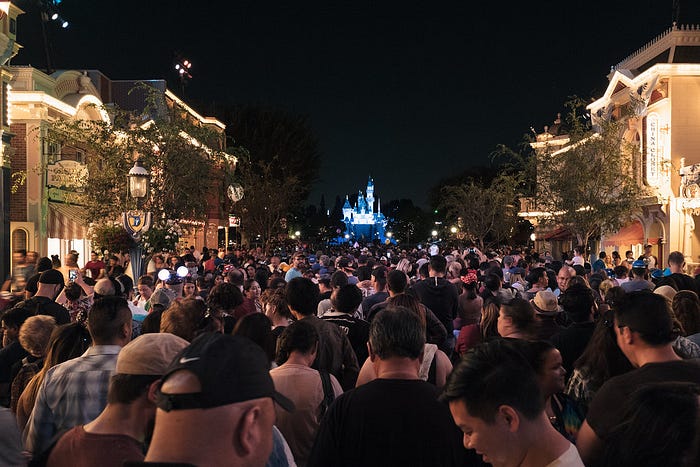Member-only story
Expectations management (Part V)
Amusement parks, crowd control and load-balancing

This is Part V in this series. In Part I, I opened the with news that Disneyland Paris is getting rid of its Fastpasses in favor of a per-ride, per-person premium to skip the line, and explored the history of Disney themeparks and what they meant to Walt Disney. In Part II, I explored Disneyland’s changing business-model and the pressures that shifted it from selling ticket-books to selling all-you-can-eat passes, and the resulting queuing problems. In Part III, I described how every fix for long lines just made the problem worse, creating complexity that frustrated first-time visitors and turning annual passholders into entitled “passholes.” In Part IV, I look at the legal and economic dimension of different pricing models for managing aggregate demand.
There’s an old joke about a first-time visitor to a Disney theme park who gets in a very long line on the assumption that any queue that long must go somewhere great.
The punchline is that it’s the line for the bathroom.
Womp womp.
FOMO
This terrible joke has circulated for decades because it contains a kernel of truth — people join lines for high-demand items on the assumption other people have information that they lack, which makes long lines a signal of good things in short supply. The right kind of line is a sign of both desirability and imminent loss, a self-sustaining phenomenon driven by FOMO, the fear of missing out.
Disney knows this, of course. People who are unfamiliar with Disney rides use queues as guides to the desirability of rides. Rides that have no queue at all are easy to skip over as likely duds, so Disney adjusts the internal structure of its queues to maintain a queue that stretches to the ride entrance, visible from the “street” outside. Many Disney rides have flexible queueing spaces: think of the Jungle Boat Cruise, with its optional additional building and an entire shaded upper level that lets attendants double the number of people that fit inside the show building.
FOMO is a powerful motivator than can shape group behavior. PT Barnum’s infamous “This Way To the Egress” sign drew crowds through the Big Top and out onto the midway…
